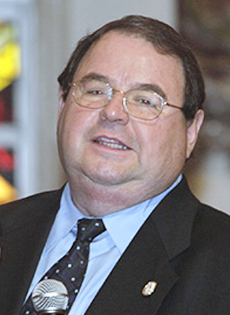
Among wolves
Monday, July 1, 2019
*Rogelio Zelada
The words of the Master were not well received this time in the hearts of the disciples, so much so that all of a sudden they all thought or wanted to believe they had heard wrong. Most of them had not been able to understand the full extent of Jesus' announcement, but were afraid to ask about its meaning. Only Peter, who could not stand Jesus speaking of rejection, of suffering, of being killed by the conspiracy of the priests and scribes, has rebuked him in private for the imprudence of what he considers a senseless foolishness. Jesus strongly rejects Peter’s proposal immediately and compares him with none other than Satan himself: “You are thinking not as God does, but as human beings do.”
Repeatedly, Jesus announces his painful death and the possible destiny of martyrdom for those who wish to share his cup; a difficult path that the Church will face through the centuries for fidelity to its crucified teacher. The glorious life of the resurrection is the ending of many painful stories to be lived since the very beginning of the Christian faith. Stephen will hardly have time to forgive his murderers as they crush him with a deluge of stones. Peter, crucified upside down, will wash the sand of Rome with his blood, and Paul, being a Roman citizen, will have the “privilege” of a quick death when the executioner cuts off his head with the stroke of a sword. Martyrdom will be the sign that identifies the highest honor of the Christian communities of the first centuries and of all the history of the Church.
I was visiting the church of the convent of the Carmelite Fathers in Paris, the sanctuary that holds the relics of 191 martyrs of terror, whom the French Revolution assassinated in several places of the City of Light in the name of “freedom, equality and fraternity.” The temple keeps in its lower level the skulls of the archbishops, bishops, priests, religious and laity who, out of fidelity to the Gospel, refused to swear to the civil constitution of the clergy, considering it fundamentally opposed to the faith of the Church.
The temple of Carmel, turned into a jail for the clergy, had two staircases on both sides of the naves leading to the garden of the Carmelite friars. Those who refused to sign the revolutionary constitution would come down through one and be shot in the temple right there, their bodies thrown into a common grave in the garden. Those who yielded to fear and signed the act that dissolved their ties with the Church of Rome abandoned the temple through the other door.
Going down to the crypt makes a deep impression upon the spirit of the visitor. Hundreds of human skulls, each of them with the imprint of a shot in the head, are perfectly placed in large reliquaries enclosed behind iron bars. In 1926, Pius XI beatified all the victims of this collective martyrdom, which took place in early September 1792. Together with these relics of the martyrs of France, by his own request, is the tomb of Frederick Ozanam, a French layman and politician who founded the Society of the Conferences of St. Vincent de Paul.
Two years after the crime of the martyrs of Paris, the 16 Carmelite mothers of the Monastery of Compiègne went to the guillotine for the same reason. Like all the nuns in France, the contemplative religious had their monastery confiscated, since all the convents were also suppressed “in the name of freedom.” The terrible persecution against the Church and the religious communities was allowed by a law passed February 13, 1790, which considered conventual and cloistered life “enemies of reason.” The Discalced Carmelites had to leave not only the monastery but also their religious habits, forced by a “revolution” eager to “liberate” them from that “submission contrary to the freedom that was religious life” and from something as “unnecessary” as the “dedication to prayer and contemplative life.” In the most absolute anonymity, the nuns continued their community life clandestinely in the homes of some Catholic faithful.
Worship was eliminated and replaced by the “cult to the goddess reason,” with a prohibition that reached even the private sphere. Any detected and denounced religious expression could be considered high treason to the Revolution, a crime that carried the death penalty.
An anonymous report to the Public Health Committee unleashed the wrath of the authorities, who arrested the nuns accused of circumventing the laws by living in community and were condemned to death for “conspiring to reestablish the monarchy and Catholic preponderance.” They were transferred with their hands tied behind their backs to the Conciergerie in Paris, filled with priests and religious condemned to death, accused of fanaticism, of keeping religious vows, of living in community and “attachment to those childish beliefs and their silly religious practices,” and hiding weapons in the convent.
Brandishing her crucifix, the prioress, Mother Teresa of St. Augustine, responded to the tribunal: “This is the only weapon that we keep in the convent and we have never had another.”
On July 17, 1794, and next to the guillotine, they renewed their baptismal promises and the vows that bound them to the Carmel. They sang the Te Deum and climbed quietly to the scaffold. Sixteen Carmelites were guillotined while they were singing the Veni Creator Spiritus. Pope St. Pius X inscribed them on the list of blessed martyrs on May 27, 1906.
From then on, the list of martyrs of the Catholic Church has grown and spread to all parts of the world, from the communist dictatorships of Eastern Europe, to Asia, to the Arab world, to Latin America, Africa, India, and beyond. We already know that the disciples cannot be less than the Master, and the dry wood will not be treated better than the green. In short, from the prophetic words of Christ, we cannot lose sight that we have been sent as sheep among wolves.


Comments from readers